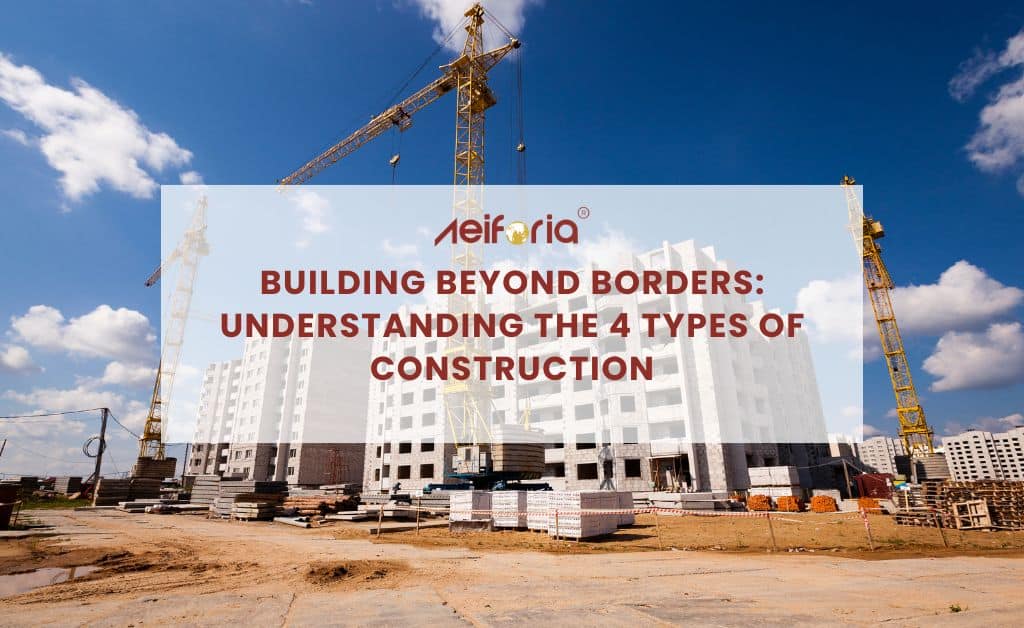
Warehouse Construction
Warehouse construction is a vital component of any business that deals with manufacturing or distribution. Proper design, planning, and cost management are critical to ensuring the warehouse functions effectively and efficiently. This article will explore the key considerations regarding warehouse construction, from the initial design stage to the final cost analysis.
Table of Contents
- Introduction
- Importance of Warehouse Design
- Efficient Use of Space
- Optimized Material Flow
- Improved Safety
- Planning for Warehouse Construction
- Site Selection
- Building Layout and Design
- Zoning and Permitting
- Key Components of Warehouse Construction
- Foundation
- Structural Framework
- Roofing and Walls
- Electrical and Mechanical Systems
- Cost of Warehouse Construction
- Cost Factors
- Budgeting and Financing
- Cost Reduction Strategies
- Differences between warehouse construction vs. a traditional building
- Conclusion
- FAQs
Introduction
Warehouse construction involves designing, planning, and constructing facilities specifically designed to store and distribute goods. These facilities can vary significantly in size, complexity, and functionality, depending on the needs of the business. However, all warehouses share a common goal: to provide a safe and efficient environment for storing and moving goods.
Proper warehouse construction is critical to any business that relies on manufacturing or distribution. A well-designed warehouse can improve material flow, reduce the risk of accidents and injuries, and optimize the use of space.
Importance of Warehouse Design
Efficient warehouse design is critical to the success of any manufacturing or distribution business. A well-designed warehouse can improve material flow, optimize the use of space, and reduce the risk of accidents and injuries. Here are three key benefits of proper warehouse design:
Efficient Use of Space
Proper warehouse design can maximize available space, allowing businesses to store more goods in a smaller footprint. This is particularly important in areas where real estate is at a premium. A well-designed warehouse can include mezzanines, high-density storage, and narrow aisles, which can increase storage capacity.
Optimized Material Flow
Warehouse design can also improve the flow of materials throughout the facility. This includes the movement of goods from receiving to storage to shipping. Optimizing material flow can reduce the time it takes to move goods, improving overall efficiency and reducing labor costs.
Improved Safety
Finally, proper warehouse design can improve the safety of workers and goods. This includes clear aisleways, designated pedestrian walkways, and safety barriers. Businesses can improve their bottom line and protect their employees by reducing the risk of accidents and injuries.
Also Read: Importance Of Construction Safety On Your Projects
Planning for Warehouse Construction
Before construction can begin, businesses must carefully plan their warehouse construction project. This involves several key steps, including site selection, building layout and design, and zoning and permitting.
Site Selection
The first step in planning for warehouse construction is site selection. This involves identifying a location suitable for the business's needs. Factors to consider include proximity to suppliers and customers, transportation infrastructure, and zoning regulations.
Building Layout and Design
After selecting a site, the subsequent step is to plan the warehouse layout. This includes the size and shape of the building, as well as the placement of critical features such as loading docks, offices, and storage areas.
Zoning and Permitting
Before construction can begin, businesses must obtain the necessary zoning and building permits from local authorities. This process includes submitting plans and specifications for the warehouse and obtaining approval from the relevant regulatory bodies.
Key Components of Warehouse Construction
Warehouse construction involves several key components, each critical to the project's success. These components include the foundation, structural framework, roofing and walls, and electrical and mechanical systems.
Foundation
The foundation is the base upon which the warehouse is built. It must be solid and stable enough to support the weight of the building and its contents. Factors to consider when designing the foundation include soil conditions, local building codes, and the type of building materials to be used.
Structural Framework
The structural framework provides support for the warehouse's walls and roof. This includes columns, beams, and trusses, which must be designed to withstand the weight of the building and any additional loads from equipment or stored goods.
Roofing and Walls
The roofing and walls of the warehouse must be designed to provide adequate protection from the elements and provide insulation and energy efficiency. When selecting roofing and wall materials, factors include local weather conditions, energy efficiency requirements, and cost.
Electrical and Mechanical Systems
Finally, the electrical and mechanical systems of the warehouse must be carefully designed to ensure efficient and safe operation. This includes lighting, heating and cooling, ventilation, and fire protection systems.
Cost of Warehouse Construction
The warehouse construction cost can vary greatly depending on several important factors, including the project's size and complexity, the site's location, and the building materials used. However, several cost factors are common to most warehouse construction projects.
Cost Factors
Some key cost factors to consider when planning for warehouse construction include site preparation and excavation, materials and labor costs, permits, and regulatory compliance costs.
Budgeting and Financing
Proper budgeting and financing are critical to the success of any warehouse construction project. This involves developing a detailed budget that accounts for all anticipated costs and securing financing from lenders or investors.
Cost Reduction Strategies
There are multiple strategies that businesses can use to reduce the cost of warehouse construction. These include using recycled or sustainable building materials, designing the warehouse to maximize energy efficiency, and using lean construction methods to reduce waste and improve efficiency.
Differences between warehouse construction vs. a traditional building construction
Warehouse construction and traditional building construction differ in several ways. Some of the key differences are:
- Purpose: The primary purpose of a warehouse is to store goods and materials, while traditional buildings are constructed for various purposes, including residential, commercial, institutional, and industrial.
- Design: Warehouses are typically designed with large, open spaces to maximize storage capacity and accommodate the movement of heavy equipment, such as forklifts. Traditional buildings, on the other hand, are designed to meet specific functional and aesthetic requirements, such as accommodating rooms, corridors, and staircases.
- Materials: Warehouse construction typically uses sturdy, durable steel, concrete, and metal panels. Traditional buildings, in contrast, often use a more comprehensive range of materials, such as wood, brick, and stone, depending on the architectural style and design.
- Construction methods: Due to their larger size and useful purpose, warehouses often require faster and more efficient construction methods, such as pre-engineered building systems or tilt-up construction. Traditional buildings may employ more conventional construction methods like stick-built or masonry work.
- Specialized features: Warehouses often require specialized features, such as loading docks, high ceilings, and climate control systems. Traditional buildings may include windows, doors, and skylights that allow natural light and ventilation.
Conclusion
Warehouse construction is a critical component of any business that deals with manufacturing or distribution. Proper design, planning, and cost management ensure the warehouse functions effectively and efficiently. By carefully considering factors such as site selection, building design, and cost management, businesses can create safe, efficient, and cost-effective warehouses.
FAQs
How long does it take to construct a warehouse?
The timeline for warehouse construction can vary depending on multiple factors, including the size and complexity of the project and the availability of labor and materials. However, most warehouse construction projects take between 6 months and two years to complete.
What is the average cost of warehouse construction?
The cost of warehouse construction can vary greatly depending on multiple factors, including the project's size and complexity, the site's location, and the building materials used. However, the average warehouse construction cost in the United States is around $100 to $200 per square foot.
What factors should I consider while selecting a site for my warehouse?
When selecting a site for your warehouse, you should consider factors such as proximity to suppliers and customers, transportation infrastructure, zoning regulations, and local labor availability.
How can I reduce the cost of warehouse construction?
There are multiple strategies that businesses can use to reduce the cost of warehouse construction. These include using recycled or sustainable building materials, designing the warehouse to maximize energy efficiency, and using lean construction methods to reduce waste and improve efficiency.
What are some common challenges associated with warehouse construction?
Common challenges associated with warehouse construction include:
- Site selection and preparation.
- Obtaining necessary permits and regulatory compliance.
- Managing construction costs.
- Ensuring the safety and efficiency of the finished facility.
How can Aeiforia help?
Aeiforia is a reputable, experienced warehouse construction company in Delhi, NCR, India. Their team of architects, engineers, and construction professionals work collaboratively to create customized warehouse designs that meet the specific needs of their clients. Aeiforia is committed to delivering projects on time and within budget without compromising quality. The company uses cutting-edge technology and sustainable materials to ensure that each warehouse is energy-efficient and environmentally friendly. Aeiforia can build warehouses tailored to their client's unique requirements, whether a small storage facility or a large distribution center.






